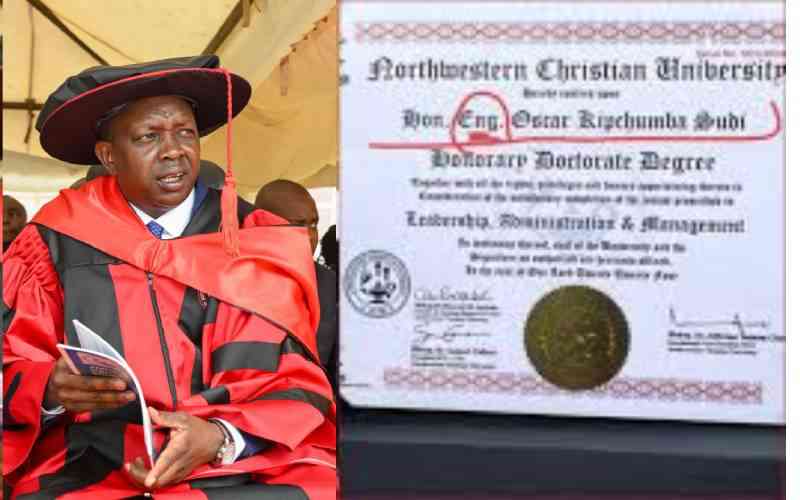By Amos Kareithi
A malevolent wind seems to sweep across the country every time Kenya is about to implement a new constitution.
Echoes of the events that took place 50 years ago as Kenyans prepared to shake off the shackles of colonialism are coming back to haunt us. Today’s unfolding scenario is indicative of a country still being held hostage by its divisive past.
Three months before Kenya gained independence, there were great expectations but these were overshadowed by a looming crisis.
Anxiety, fear and confusion had gripped the country in October 1963 as the founding fathers were holed up in London’s Lancaster House, brushing up the brand new Constitution.
Details published in Kenya: History since independence, a voluminous book by Charles Hornsby, captures the nail biting moments Kenyans went through, two months before December 12, 1963.
The anxiety started when one of the parties involved in the tripartite negotiations, Kadu (Kenya African Democratic Union), declared that the Secretary of State for the colonies, Duncan Sandys, had betrayed it.
Walkout
In the eyes of Kadu, Sandys and the British government had ceded too much ground to the Jomo Kenyatta-led Kanu (Kenya African National Union) and watered down the federal (majimbo) system of government. There were fears that the major communities would take up land in marginal areas. This system had been the pillar of federalism as envisaged by Kadu’s president, Ronald Ngala.
Kadu staged a walkout at the conference, precipitating a crisis that thrust the 73-year-old prime minister, Kenyatta, in the eye of the storm.
Even as Kenyatta and the perplexed British government tried to forestall the dispute from being amplified to unmanageable levels, Kadu added fuel to the raging fire.
There was consternation when one of Kadu’s delegates in London, Jean Marie Seroney, dispatched a telegram to the president of the Rift Valley Regional Assembly, Daniel arap Moi, detailing the ‘treachery’ and ‘betrayal’ committed by their erstwhile allies, the British.
To demonstrate its seriousness, on October 10, 1963, Kadu announced that it was forming a Sovereign Federal Republic of Kenya with Ngala as designated president.
During this period, political temperatures were rising in Rift Valley, where sections of the population were reportedly arming themselves in readiness for the impending showdown with the colonial government.
It was a case of reversed roles as Britain and Kenyatta — the man colonialists had jailed, demonised and declared a leader unto ‘death and darkness’ — found themselves pulling from the same side. They were up against Kadu, a party the colonial government had been backing to counterbalance the more radical Kanu.
Stay informed. Subscribe to our newsletter
Hornsby writes of the rising tensions: “Security forces were on high alert and Britain was desperate to avert a civil war. It availed the services of BBC to Kenyatta to reassure Kenyans that the government was in control in broadcasts he made from London on October 10, 1963.”
Stalemate
In the meantime, the British government through Sandys, warned Kadu that troops would be used against the party’s followers if they persisted.
To unlock the stalemate in London, another delegate, Martin Shikuku, was dispatched from the Lancaster conference to Nairobi to try and talk to the Kadu leaders who were threatening to make a unilateral declaration of independence.Ultimately, on October 14, Ngala postponed the secession plan.
However, things took an interesting turn on October 19, 1963, after Kanu also threatened to walk out of the independence talks. The tough talking Kenyatta also threatened to make a unilateral declaration of independence if their demands were not met.
Kanu, through Kenyatta, was demanding that the police and the civil service be centrally managed although there were other contentious issues such as the powers of the regional assemblies.
After ratcheting up the pressure and squeezing out as many concessions as possible, Kanu emerged victorious, while Kadu had to beg Kenyatta to respect other aspects of the constitution.
The conference ended on October 19 and the delegates returned to Kenya.
Three days later, Ngala shelved his plan of action and his pet project of federalism died even before it had been fully implemented.
All these controversies appear to have been forgotten on December 12, 1963, when an estimated 250,000 people braved the chilly weather that Friday and wildly cheered the fly whisk waving Kenyatta as he rode into Uhuru Stadium (today known as Uhuru Gardens).
The crowd was ecstatic as Kenyatta received a copy of the constitution and other instruments of office from Prince Phillip, the Duke of Edinburg, as the colonial secretary watched.
Earlier, there had been concern because both Kenyatta and Prince Philip arrived later for the swearing-in owing to a nasty traffic snarl up on Ngong Road.
The carnivore mood was, however, dampened by reports from Rift Valley indicating that some leaders were still keen on breaking away. This was after Justus ole Tipis, the president of the Rift Valley Regional Assembly, announced that the region’s coat of arms and flag had been designed and their production commissioned.
The details are recorded in The East African Standard published on December 13, 1963.
This was happening even as experts explained to the residents and leaders in Rift Valley that constitutionally, only the Central Government was entitled to its own coat of arms and flag.
Similar path
In Nairobi, when Kenyatta finally took the constitution from the Duke of Edinburg, the New York Times proclaimed: “ with the lowering of Britain’s Union Jack, political power had slipped from the hands of 55,759 whites to 8,365,942 Africans”.
On April 9, Prince Philip is not likely to be at Kasarani International Sports Complex when Uhuru Kenyatta, Jomo Kenyatta’s son, receives instruments of power, 50 years after his father.
The 51-year-old Uhuru, who until the March 4 General Election was a deputy prime minister, a rank lower than the one Jomo Kenyatta held before becoming president, has traveled a political path almost similar to his father’s.
Uhuru’s presidency was frowned upon by Britain and other Western countries owing to the crimes against humanity charges facing him at The Hague.
When Uhuru marches down the red carpet and raises the Bible, he will swear an oath to protect the relatively new Constitution, not the Lancaster one crafted by his father’s generation.
He is expected to shepherd Kenya into the post-independence Constitution just as his father shepherded Kenya from the colonial to the independence Constitution.
Just like in 1963, when Jomo Kenyatta was expected to implement a federal state, Uhuru is poised to be Kenya’s first post-colonial president to steer a devolved system of government.
There is controversy surrounding the extent of autonomy to be enjoyed by the 47 counties and it will be interesting to see whether Kenya will remain a unitary state.
Natural attrition has seen to it that very few of the 250,000 Kenyans who braved the 1963 downpour will be present to witness Uhuru inaugurated the fourth president of Kenya.
Among the lucky few will be Mama Ngina Kenyatta, Uhuru’s mother, who will smile nostalgically watching Uhuru, who was two when his father became president, being sworn in as the commander-in-chief, 50 years later.
In an ironic twist of history repeating itself, Uhuru, like his father will have to grapple with governors, who, like their 1963 predecessors, are demanding that they, too, fly the national flags on their limousines.
The writer can be reached on [email protected]
 The Standard Group Plc is a
multi-media organization with investments in media platforms spanning newspaper
print operations, television, radio broadcasting, digital and online services. The
Standard Group is recognized as a leading multi-media house in Kenya with a key
influence in matters of national and international interest.
The Standard Group Plc is a
multi-media organization with investments in media platforms spanning newspaper
print operations, television, radio broadcasting, digital and online services. The
Standard Group is recognized as a leading multi-media house in Kenya with a key
influence in matters of national and international interest.
 The Standard Group Plc is a
multi-media organization with investments in media platforms spanning newspaper
print operations, television, radio broadcasting, digital and online services. The
Standard Group is recognized as a leading multi-media house in Kenya with a key
influence in matters of national and international interest.
The Standard Group Plc is a
multi-media organization with investments in media platforms spanning newspaper
print operations, television, radio broadcasting, digital and online services. The
Standard Group is recognized as a leading multi-media house in Kenya with a key
influence in matters of national and international interest.







